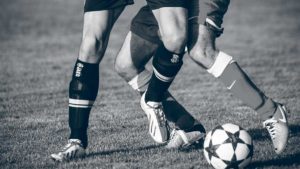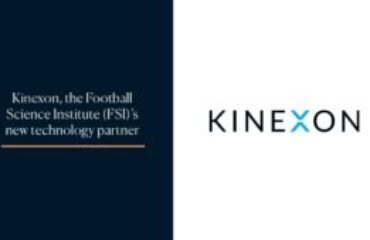1. Anterior Cruciate Ligament Reconstruction Increases the Risk of Hamstring Strain Injury Across Football Codes in Australia
Messer DJ, Williams MD, Bourne MN, Opar DA, Timmins RG, Shield AJ
Queensland University of Technology, Brisbane, QLD, Australia
Sports Med. 2021 Oct 28. doi: 10.1007/s40279-021-01567-x
In this prospective cohort study in one season of 531 male football codes, 74 athletes suffered at least one prospective Hamstrings Strain Injury HSI. Compared with control athletes, those with a lifetime history of ACLR and no recent HSI had 2.2 (1.1-4.4) times greater odds of subsequent HSI while those with at least one HSI in the previous 12 months and no history of ACLR had 3.1 (1.8-5.4) times greater odds for subsequent HSI. Only athletes with a combined history of ACLR and recent HSI had weaker (Nordic hamstring exercise) injured limbs. An exploratory decision tree analysis suggested eccentric strength may protect against HSI after ACLR.
2. Cognitive ability in former professional football (soccer) players is associated with estimated heading frequency
Bruno D, Rutherford A
School of Psychology, Liverpool John Moores University, UK
J Neuropsychol. 2021 Oct 28. doi: 10.1111/jnp.12264
This study in 60 males (mean age = 67.5), who had played soccer professionally for teams in England found that estimated career headers, but not estimated career head injuries, predicted lower results of the Test Your Memory (TYM) self-administered cognitive test.
3. Relationship Between Explosive Strength Capacity of the Knee Muscles and Deceleration Performance in Female Professional Soccer Players
Zhang Q, Léam A, Fouré A, Wong DP, Hautier CA
Université de Lyon, Villeurbanne, France
Front Physiol. 2021 Oct 11;12:723041. doi: 10.3389/fphys.2021.723041
The present study in 14 female professional soccer players found that the eccentric and concentric Knee Extension isokinetic peak torque, and the concentric Knee Flexion isokinetic peak torque were significantly correlated with the horizontal breaking force, power, and impulse during a maximal linear deceleration.
4. Does Acute Caffeine Supplementation Improve Physical Performance in Female Team-Sport Athletes? Evidence from a Systematic Review and Meta-Analysis
Gomez-Bruton A et al
GENUD (Growth, Exercise, Nutrition and Development) Research Group, Zaragoza, Spain
Nutrients. 2021 Oct 19;13(10):3663. doi: 10.3390/nu13103663
This meta-analysis of 18 articles that fulfilled the inclusion/exclusion criteria showed that caffeine increased performance in specific team-sport skills (SMD: 0.384, 0.077-0.691), countermovement jump (SMD: 0.208, 0.079-0.337), total body impacts (SMD: 0.488; 0.050-0.927) and handgrip strength (SMD: 0.395, 0.126-0.665). No effects were found on the ratings of perceived exertion, squat jumps, agility, repeated sprint ability or agility tests performed after fatigue. Hence, caffeine could be considered as a supplementation strategy for female athletes competing in team sports.
5. Medial Meniscus Repair in Major League Soccer Players Results in Decreased Performance Metrics for One Year and Shortened Career Longevity
Heath D et al
UT Health San Antonio, San Antonio, USA
Open Access J Sports Med. 2021 Oct 28;12:147-157. doi: 10.2147/OAJSM.S337251
This study in 33 MLS players who had undergone medial meniscus repair matched to 66 controls, shows that all performance metrics: matches, minutes, goals, assists, shots, shots on target, duels, and won duels percentage decreased in the first year after injury. This difference remained significant even when the performance metrics were normalized with respect to time played, indicating that the injured players both played less and were not as productive when playing. At 2 years after injury, performance metrics returned to pre-injury levels and were equivalent to those of the healthy controls. Career length was found to be significantly shorter at 8.81 ± 3.9 years for the MMT group than 12.63 ± 3.51 years for the control group.
6. The COVID-19 Pandemic Impact on Away and Home Victories in Soccer and Rugby Union
Sedeaud A, De Larochelambert Q, Schipman J, Toussaint JF
Institut de Recherche BioMédical et d’Epidémiologie du Sport (IRMES), Paris, France
Front Sports Act Living. 2021 Oct 18;3:695922. doi: 10.3389/fspor.2021.695922
This study analysed 2 samples of professional soccer and rugby union matches collected from 2012-13 to 2020-21 seasons, in first and second division of the England, Spain, Germany, Italy, France, Belgium, Scotland, Greece, Portugal, and Turkey soccer championships, and rugby Premiership, Celtic League, Top 14, and Pro D2. The proportion of away matches won between the 2012-13 and 2020-21 seasons increased significantly from 28.5 % to 32.5% in soccer and from 38.03.6% to 42.8% in rugby union. The home advantage was drastically reduced in empty stadiums for several European soccer and rugby union professional championships.
7. Identification of Neuromuscular Performance Parameters as Risk Factors of Non-contact Injuries in Male Elite Youth Soccer Players: A Preliminary Study on 62 Players With 25 Non-contact Injuries
Kolodziej M, Nolte K, Schmidt M, Alt T, Jaitner T
Department of Strength and Conditioning and Performance, Borussia Dortmund, Dortmund, Germany
Front Sports Act Living. 2021 Oct 18;3:615330. doi: 10.3389/fspor.2021.615330
This study in 62 elite youth soccer players (age: 17.2 ± 1.1 years) found that a Classification and Regression Tree (CART) method using the scores in the following preseason tests: COP sway, peak torque for knee flexion concentric, functional knee isokinetic ratio and the path of the platform in that hierarchical order could discriminate between players sustaining non-contact lower extremities injuries throughout 10 months and non-injured players, with a sensitivity of 0.73 and a specificity of 0.91. The relative injury risk was calculated at 4.2 meaning that the risk of suffering an injury was four times greater for a player classified as injured by this Decision Tree model.
8. Defending in 4-4-2 or 5-3-2 formation? small differences in footballers’ collective tactical behaviours
Low B, Rein R, Schwab S, Memmert D
German Sport University Cologne, Cologne, Germany
J Sports Sci. 2021 Nov 2:1-13. doi: 10.1080/02640414.2021.1993655
69 nine youth footballers participated in this 11-versus-11 study, performing 72 trials of attack-versus-defence measured with a local positioning system and an analysis of passing networks. Compared to a 4-4-2 formation, defending in 5-3-2 reduced dispersion and length of the team, and the consequent effects on attacking teams included reduced team width, reduced necessity for back-passes to the goalkeeper, and less connectivity in the passing network. The effects of the two defending formations seem to have the greatest impact on fullbacks of the attacking teams, since they were main contributors of the reduced team widths, received more passes, and had higher betweenness centrality in the right-back position during 5-3-2 defending.
9. Deceleration Training in Team Sports: Another Potential ‘Vaccine’ for Sports-Related Injury?
McBurnie AJ, Harper DJ, Jones PA, Dos’Santos T
Department of Football Medicine and Science, Manchester United Football Club, Manchester, UK
Sports Med. 2021 Oct 29. doi: 10.1007/s40279-021-01583-x
This Current Opinion article provide considerations around the assessment, training and monitoring of high-intensity horizontal deceleration, characterised by a ground reaction force profile of high impact peaks and loading rates, that can lead not only to tissue damage, but also to neuromuscular fatigue affecting the co-coordinative proficiency and the individual’s ability to skilfully dissipate braking loads, thus offering an explanation for the chronic aetiological consequences of the ‘mechanical fatigue failure’ phenomenon. Training strategies ensuring frequent high-intensity horizontal deceleration exposure in order to accustom individuals to them can potentially reduce the damaging effects of these intense decelerations that athletes frequently perform in competition.





